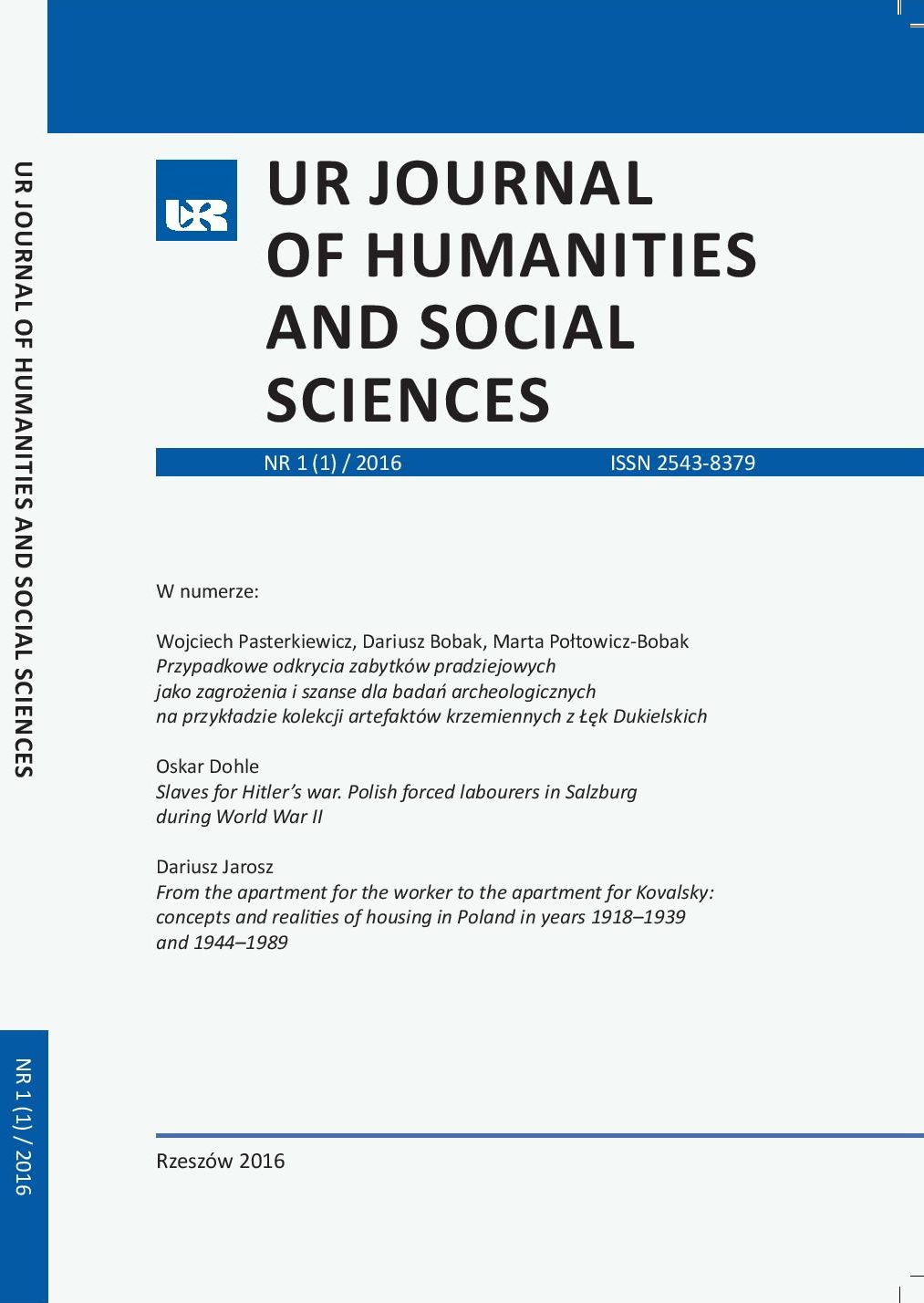The accidental discovery of prehistoric remains as chance and threat for archaeological research on the basis of the collection of flint artefacts from Łęki Dukielskie
DOI:
https://doi.org/10.15584/johass.2016.1.1Keywords:
Stone Age, Flint artefact collection, the history of research, the interpretation of accidental findsAbstract
The terrain of south-eastern Poland provides more and more traces of Palaeolithic settlement. The close of the Palaeolithic epoch is relatively well recognised, while the earlier phases of this era are poorly identified. This is why the modest collection of artefacts from Łęki Dukielskie is deserving of attention. In its entirety it contains just 14 flint remains. 13 of them are tools and corresponding fragments. Among the tools 7 examples from the group of bifacials stand out.
This small collection was compiled from various types of resources of unknown origin. An interpretation of the remains is extremely difficult. The artefacts are so diverse that their mutual connections are unclear. Analogies may be found at excavations from across the territory of Europe and from an extremely broad time period – from the end of the Middle Palaeolithic Period possibly ranging up to the beginning of the Younger Stone Age.
The collection makes an important contribution to discussions on the value of assortments gained in almost unknown circumstances. The nature of the collection forces the question to be asked as to its actual origins. If it were accepted that the find comes from elsewhere, which is a possibility, then the next question should be how did they come to be in a field in Łęki Dukielskie? The fact that they herald from the region in which they were discovered may not be excluded. This would mean that it is the first and only trace of settlement from the turn of the Stone Age to be found in the south-eastern region of Poland, and simultaneously an important source for research into the oldest settlement in the Subcarpathian region.
However, if it is a collection of unknown origin then its worth is nothing more than the intrinsic worth of the items themselves – aesthetic beauty – without having any scientific significance in the reconstruction of the oldest events discussed in this region.
Downloads
Downloads
Published
How to Cite
Issue
Section
License
Copyright (c) 2016 Wydawnictwo Uniwersytetu Rzeszowskiego

This work is licensed under a Creative Commons Attribution-NonCommercial 4.0 International License.



